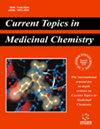Quinolone Derivatives as Anticancer Agents: Importance in Medicinal Chemistry
IF 2.9
4区 医学
Q3 CHEMISTRY, MEDICINAL
Current topics in medicinal chemistry
Pub Date : 2024-04-09
DOI:10.2174/0115680266300736240403075307
引用次数: 0
Abstract
:: Quinolone is a heterocyclic compound containing carbonyl at the C-2 or C-4 positions with nitrogen at the C-1 position. The scaffold was first identified for its antibacterial properties, and the derivatives were known to possess many pharmacological activities, including anticancer. In this review, the quinolin-2(H)-one and quinolin-4(H)-one derivatives were identified to inhibit several various proteins and enzymes involved in cancer cell growth, such as topoisomerase, mi-crotubules, protein kinases, phosphoinositide 3-kinases (PI3K) and histone deacetylase (HDAC). Hybrids of quinolone with curcumin or chalcone, 2-phenylpyrroloquinolin-4-one and 4-quinolone derivatives have demonstrated strong potency against cancer cell lines. Additionally, quinolones have been explored as inhibitors of protein kinases, including EGFR and VEGFR. Therefore, this review aims to consolidate the medicinal chemistry of quinolone derivatives in the pipeline and discuss their similarities in terms of their pharmacokinetic profiles and potential target sites to provide an understanding of the structural requirements of anticancer quinolones.作为抗癌剂的喹诺酮衍生物:药物化学的重要性
::喹诺酮是一种杂环化合物,C-2 或 C-4 位含有羰基,C-1 位含有氮。该支架因其抗菌特性而首次被发现,其衍生物具有多种药理活性,包括抗癌。在本综述中,发现喹啉-2(H)-酮和喹啉-4(H)-酮衍生物可抑制多种参与癌细胞生长的蛋白质和酶,如拓扑异构酶、mi-转管、蛋白激酶、磷酸肌醇 3-激酶(PI3K)和组蛋白去乙酰化酶(HDAC)。喹诺酮类药物与姜黄素或查耳酮、2-苯基吡咯喹啉-4-酮和 4-喹诺酮衍生物的混合物对癌细胞株具有很强的抑制作用。此外,喹诺酮类药物还被探索用作表皮生长因子受体(EGFR)和血管内皮生长因子受体(VEGFR)等蛋白激酶的抑制剂。因此,本综述旨在整合在研的喹诺酮类衍生物的药物化学,并讨论它们在药代动力学特征和潜在靶点方面的相似之处,从而了解抗癌喹诺酮类药物的结构要求。
本文章由计算机程序翻译,如有差异,请以英文原文为准。
求助全文
约1分钟内获得全文
求助全文
来源期刊
CiteScore
6.40
自引率
2.90%
发文量
186
审稿时长
3-8 weeks
期刊介绍:
Current Topics in Medicinal Chemistry is a forum for the review of areas of keen and topical interest to medicinal chemists and others in the allied disciplines. Each issue is solely devoted to a specific topic, containing six to nine reviews, which provide the reader a comprehensive survey of that area. A Guest Editor who is an expert in the topic under review, will assemble each issue. The scope of Current Topics in Medicinal Chemistry will cover all areas of medicinal chemistry, including current developments in rational drug design, synthetic chemistry, bioorganic chemistry, high-throughput screening, combinatorial chemistry, compound diversity measurements, drug absorption, drug distribution, metabolism, new and emerging drug targets, natural products, pharmacogenomics, and structure-activity relationships. Medicinal chemistry is a rapidly maturing discipline. The study of how structure and function are related is absolutely essential to understanding the molecular basis of life. Current Topics in Medicinal Chemistry aims to contribute to the growth of scientific knowledge and insight, and facilitate the discovery and development of new therapeutic agents to treat debilitating human disorders. The journal is essential for every medicinal chemist who wishes to be kept informed and up-to-date with the latest and most important advances.

 求助内容:
求助内容: 应助结果提醒方式:
应助结果提醒方式:


